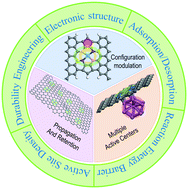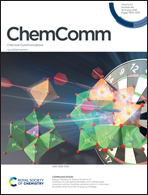Active site engineering of atomically dispersed transition metal–heteroatom–carbon catalysts for oxygen reduction
Abstract
Owing to the advantage of atomic utilization, the single-atom catalyst has attracted much attention and been employed in multifarious catalytic reactions. Its definite site configuration is favorable for exploring the actual active centers and corresponding reaction mechanism. At the atomic scale, the tunable site configuration, from central metal atoms, coordinated heteroatoms, peripheral dopants, and feasible polymetallic centers to the synergetic intrinsic carbon defects, can effectively augment the intrinsic activity for oxygen reduction reaction (ORR). From a practical viewpoint, the propagation strategies of single-atom sites, the loading-activity relation and the structural retention during practical tests are crucial for the industrial applications. Furthermore, the activity contribution of multiple additional active centers including the active carbon sites and the pony-size well-wrapped metal species should be acknowledged. From the perspective mentioned above, this paper thoroughly analyses the consensuses, controversies, challenges and possible solutions based on the current research progress, thereby providing inspiration and guidance for the active center engineering of single-atom catalysts.



 Please wait while we load your content...
Please wait while we load your content...